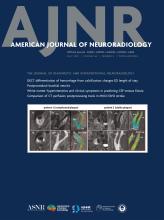Case of the Week
Section Editors: Matylda Machnowska1 and Anvita Pauranik2
1University of Toronto, Toronto, Ontario, Canada
2BC Children's Hospital, University of British Columbia, Vancouver, British Columbia, Canada
Sign up to receive an email alert when a new Case of the Week is posted.
December 24, 2015
Aicardi-Goutières Syndrome
- Background:
- Aicardi-Goutières syndrome (AGS) is an inherited encephalopathy characterized by acquired microcephaly, basal-ganglia calcification, leukodystrophy, cerebral atrophy, and CSF with chronic lymphocytosis and raised interferon-alpha. Mutations in ADAR, SAMHD1, IFIH1, TREX1, RNASEH2A, RNASEH2B, and RNASEH2C genes have been reported.
- Clinical Presentation:
- AGS usually manifests with severe intellectual and motor delay. Patients present with extreme irritability, intermittent fever, loss of skills, slowing of head growth, spasticity, and dystonia.
- Key Diagnostic Features:
- Diagnosis is made by characteristic neuroimaging findings — basal ganglia and subcortical calcifications on CT abnormal white matter signal on MRI — associated with mild CSF lymphocytosis.
- The neuroradiologic presentation usually remains substantially stable with time.
- Molecular analysis is necessary to confirm the type of AGS (in the present case, a p. Ala177Thr homozygous mutation in RNASEH2B gene).
- Differential Diagnosis:
- The main differential diagnoses are congenital TORCH infections (toxoplasmosis, rubella, CMV, herpes virus [HSV1 and HSV2]). The predominant localization of the calcifications in the basal ganglia, the negative TORCH investigations, and lack of retinopathy helps to make the differential diagnosis
- Congenital HIV encephalopathy, Cockayne syndrome, diffuse cerebral microangiopathy, carbonic anhydrase II deficiency, autosomal dominant basal ganglia calcification, and hyperparathyroidism should also be considered.
- Treatment:
- There is no available treatment at the moment











